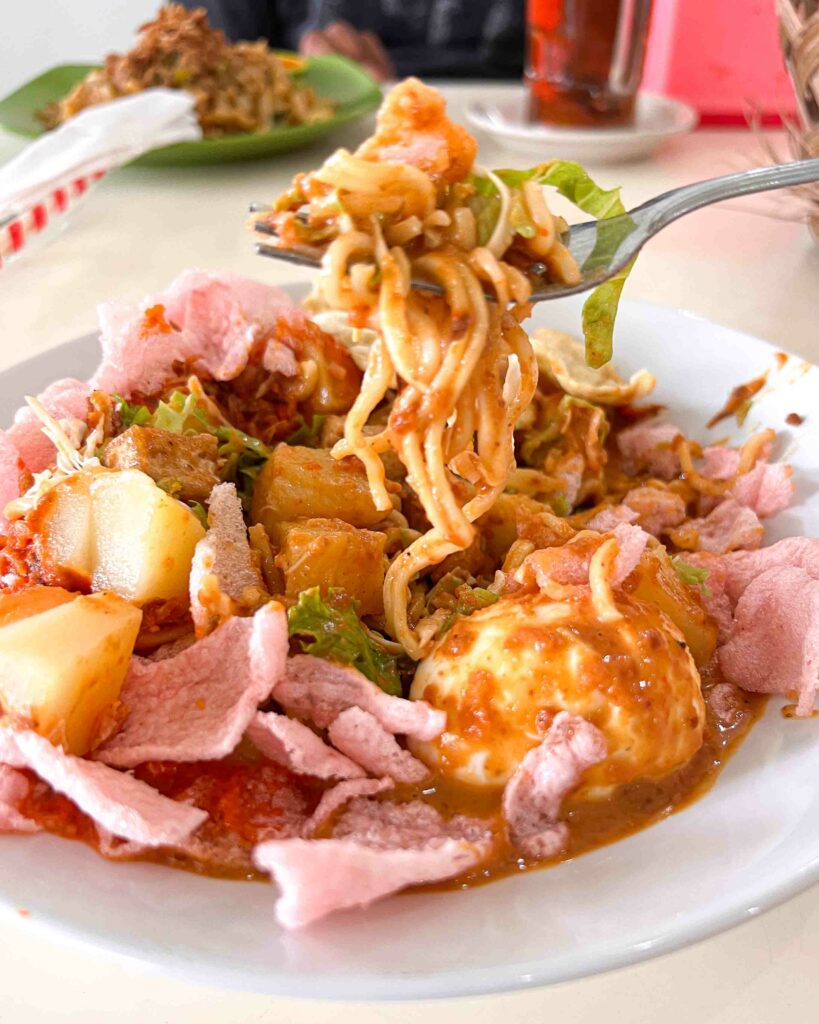Indonesian food is so delicious the country could not decide on one Indonesia national food so they have five!
Indonesians love food. They love to cook. They love to eat. They love to watch foreigners try their food on YouTube.
If we could somehow measure the top 5 countries that love food the most I know Indonesia would be there.
So it’s not surprising when I started compiling a list of Indonesian foods to try and wanted to know Indonesia’s national dish it would not be just one but actually five.
And let’s put this into perspective. Indonesia has a population over 275 million people and more than 1300 ethic groups. There are over more than 5300 native Indonesian foods.
It’s surprising there aren’t 10 national dishes instead of five.
Indonesian cuisine reflects its history, geography and diversity. While a popular Indonesian food may exist across many islands, it has its own twist.
At its core, Indonesian food features Indigenous techniques using ingredients, such as rice, fish, coconut, and a variety of spices.
Indonesian Food
Trade has played a significant role in shaping Indonesian food from these immigrants.
Early exchanges brought Indian influences such as the use of curries and complex spice blends that are most prevalent in Padang food.
Chinese immigrants introduced stir-frying methods, noodle dishes, and soy sauce, which have been seamlessly integrated into the local food culture.
Dutch colonialism left its mark with the introduction of dairy and pastry techniques, as well as a taste for sweet and savory dishes.
Middle Eastern traders contributed to the use of kebabs known locally as sate/satay and rich, meaty stews.
The result is a diverse and flavorful Indonesian food that continues to evolve, reflects the history and cultural interactions of the Indonesian people.
Indonesian National Food
If you only spend a few days in Indonesia these are the five dishes you may try. And if you’re like me and have been visiting for years I urge you to continue trying these dishes.
They change from city to city and drastically from island to island. I love discovering how a basic concept evolves.
PLANNING A TRIP TO INDONESIA?
Most Popular Indonesian Street Food
Traditional Indonesian Drinks
Off the Beaten Path in Nepal Van Java
Indonesian Vegetarian Food
Exotic Bali Fruits
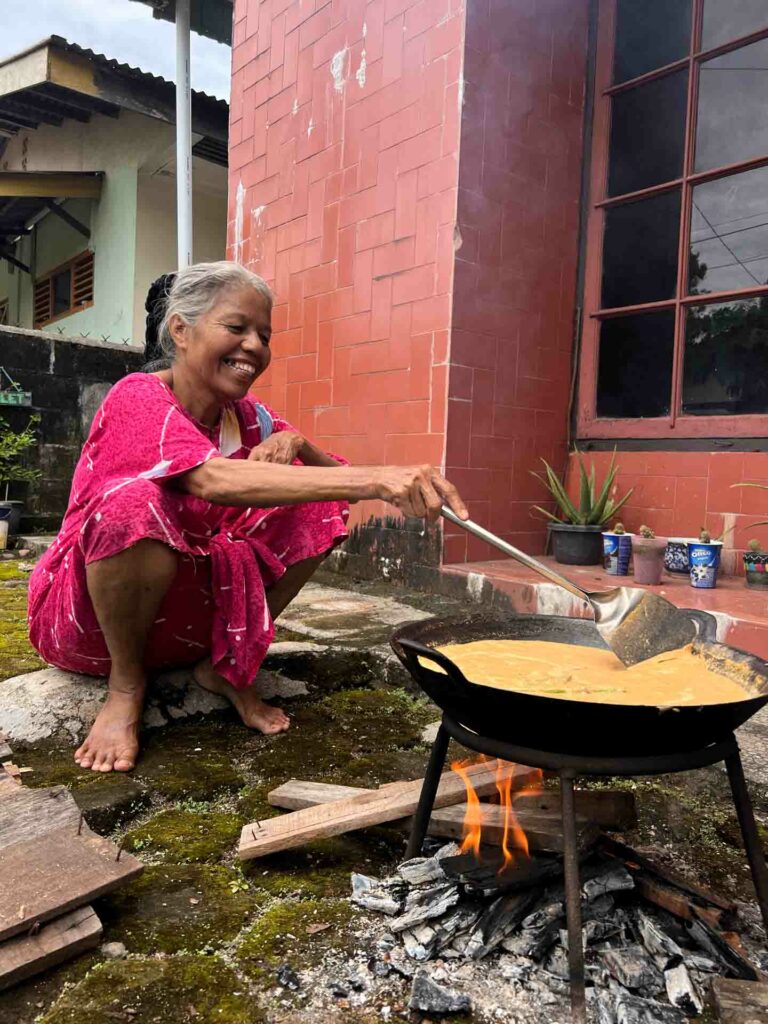
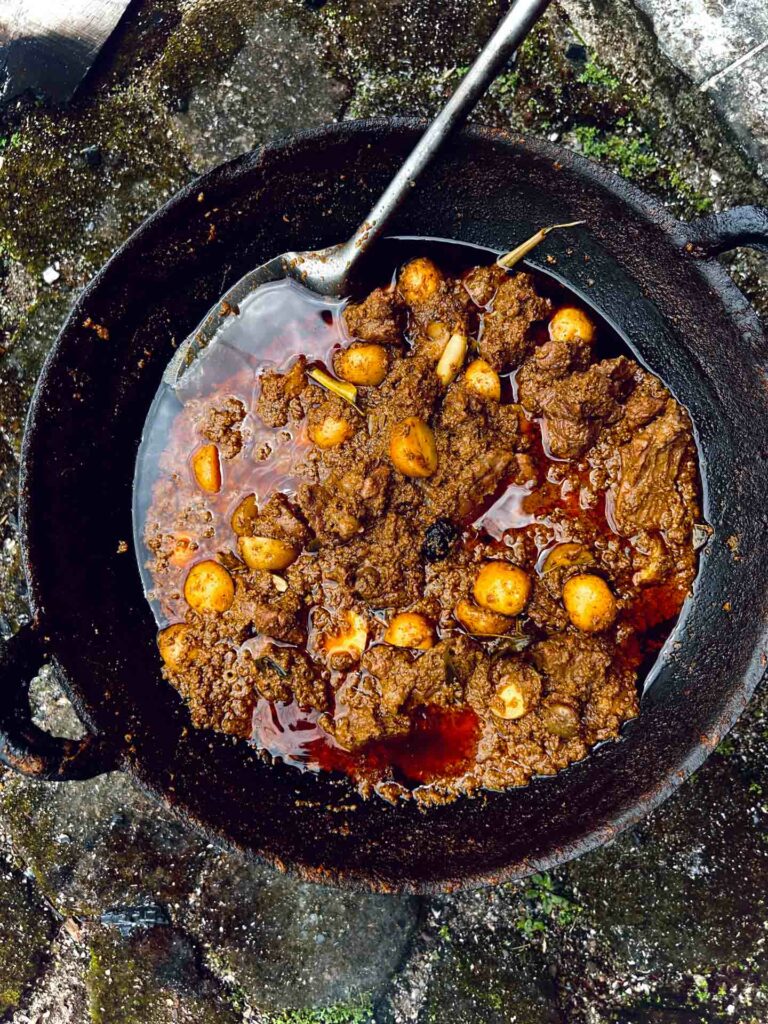
1. Rendang
Most people would think rendang is the national food of Indonesia as such a special dish.
It is originally from Padang in West Sumatra and the original recipe here is quite spicy, much like the food here.
Traditional rendang is made with beef, or water buffalo from West Sumatra. However, it’s also common to find chicken rendang.
It’s a rich, slow-cooked curry that’s both hearty and flavorful. Meat is tenderized in a mixture of coconut milk and a complex blend of spices, including lemongrass, galangal, and turmeric.
These ingredients infuse the meat over hours of simmering, creating layers of taste and an aromatic sensation.
Traditionally it’s cooked over fire for up to 12 hours. Today for convenience it’s often cooked on a gas stove for a few hours.
In other areas of Indonesia, it’s less spicy and in West Java it may even be a bit sweet. This reflects the regional cuisine in cities like Yogyakarta food or Bandung which have sweeter food.
It’s served at special occasions and events and is one of the more expensive dishes. However, find one of many Padang restaurants across Indonesia and you can try it for a couple of dollars.
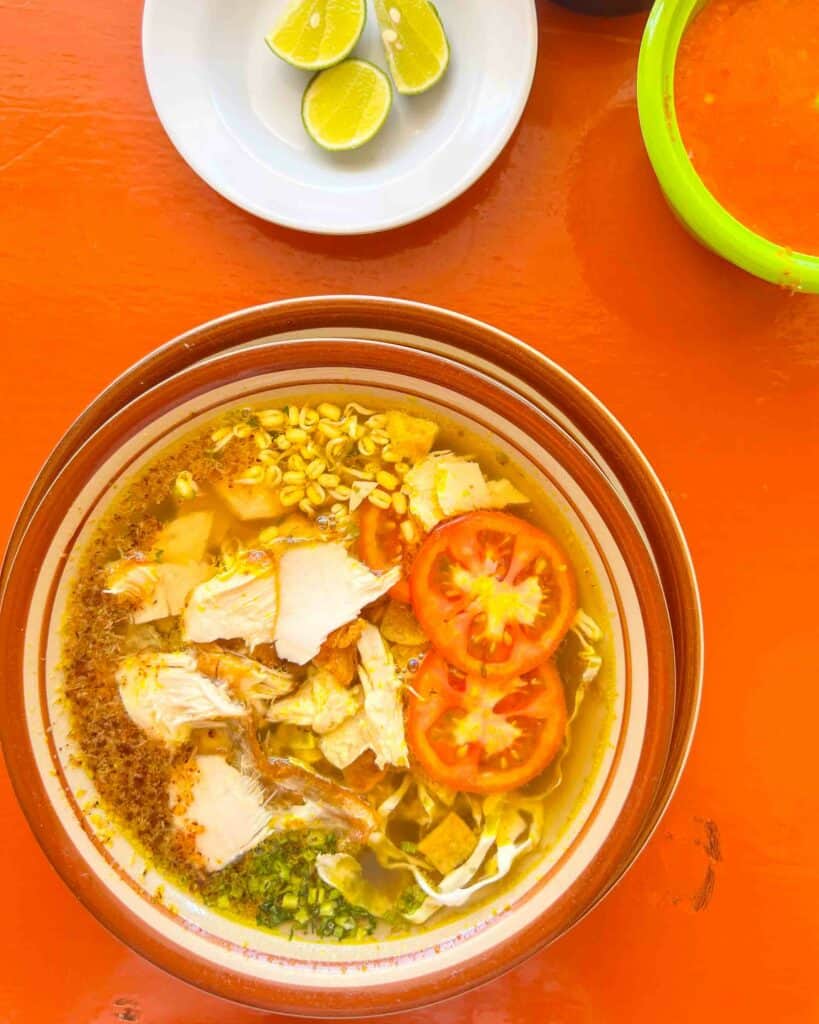
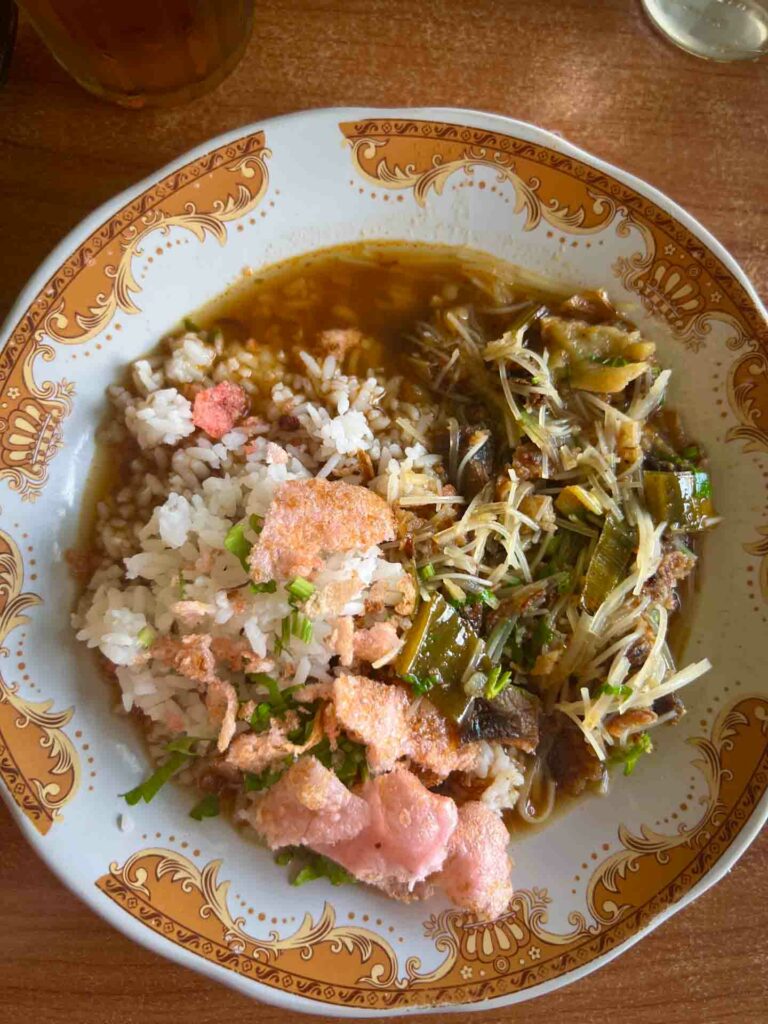
2. Soto
Soto is an Indonesia national dish but was also named one of 30 Indonesian culinary icons.
It is perhaps the best expression of Indonesia’s diversity, all in a bowl of soup. It’s a delightful broth, often with shredded chicken or beef, enriched with herbs and spices.
While it’s originally a Central Javanese dish with influence from Chinese immigrants. Each region serves up its own version.
Above on the left is a turmeric-infused soto ayam and on the right a soto nasi paru from West Sumatra.
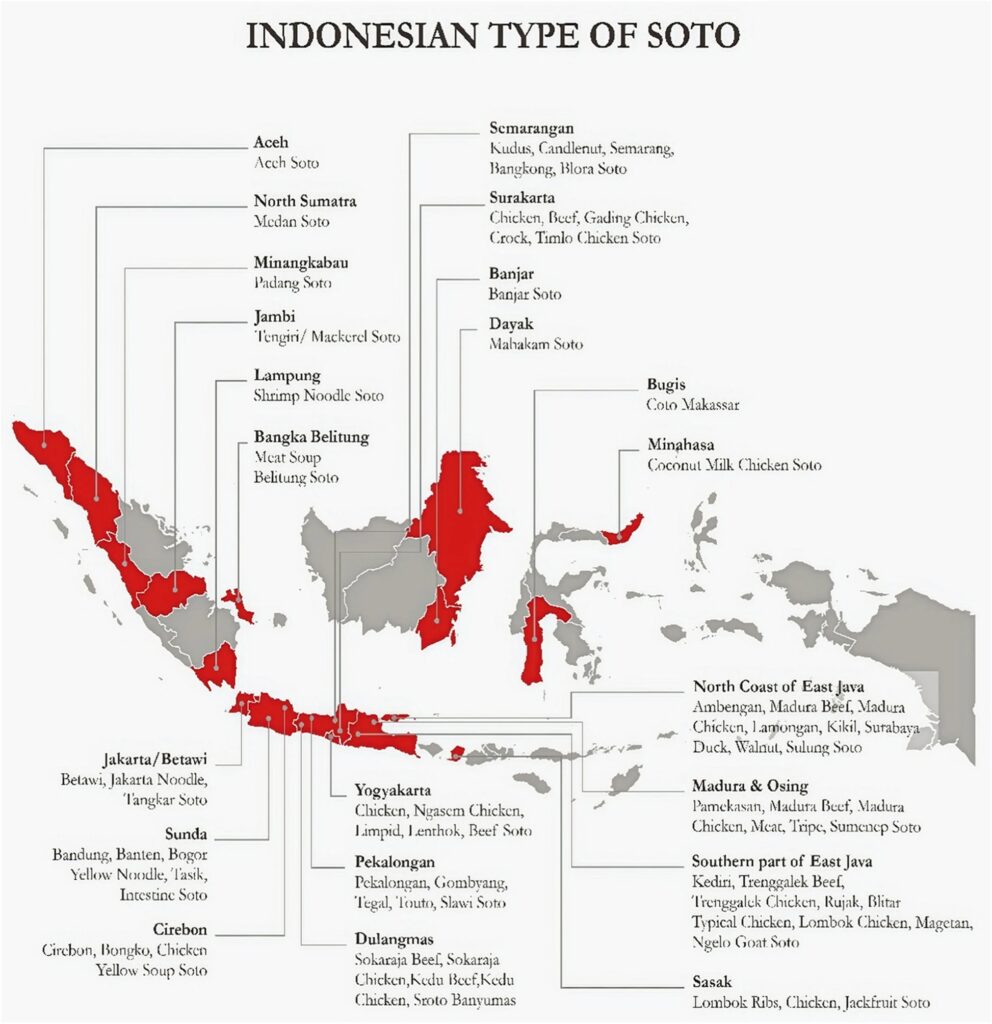
Jakarta is known for its coconut milk-laden soto betawi from Jakarta. Venture to Surabaya, and you’ll find soto Madura, featuring a darker, richer broth.
These variations showcase local ingredients and traditions, with some influenced by Chinese and Indian culinary styles.
Soto is popular because it’s rich and comforting. But it is also economical as it helps stretch meat onto many plates. It’s a common Indonesian breakfast, but also popular for any time of day.
Soto is often served with rice on the side. You don’t pour the rice into the soup as it will make the rice mushy,
But instead, ladle the soup onto the rice to prevent overcooking the rice.
3. Gado Gado
One of the most popular Indonesian foods, which also happens to be vegetarian – if you eat egg. If not just ask for it without egg.
Gado gado literally means “mix mix” and reflects that it’s a bunch of different things.
It’s a colorful medley of blanched vegetables including potato, hard-boiled eggs, tofu, and tempeh, all drizzled with a rich peanut sauce. It’s served with a compressed rice cake for sustenance.
Indonesian Fruits
There are many theories of where gado gado is from. Some say it’s Chinese influenced and others say it is originally a Sundanese dish but has won hearts across Indonesia.
It’s a healthy meal you’ll find it everywhere, including as a popular street food in Indonesia.
Gado gado is technically a vegetarian dish. But most Indonesians eat tempeh and tofu in their diet. It also evolves across the country. In Padang it will include a curry sauce and yellow noodles.
Similar vegetarian dishes in Indonesia include pecel and lotek, which also feature a mix of vegetables with peanut dressing but they are slightly different.
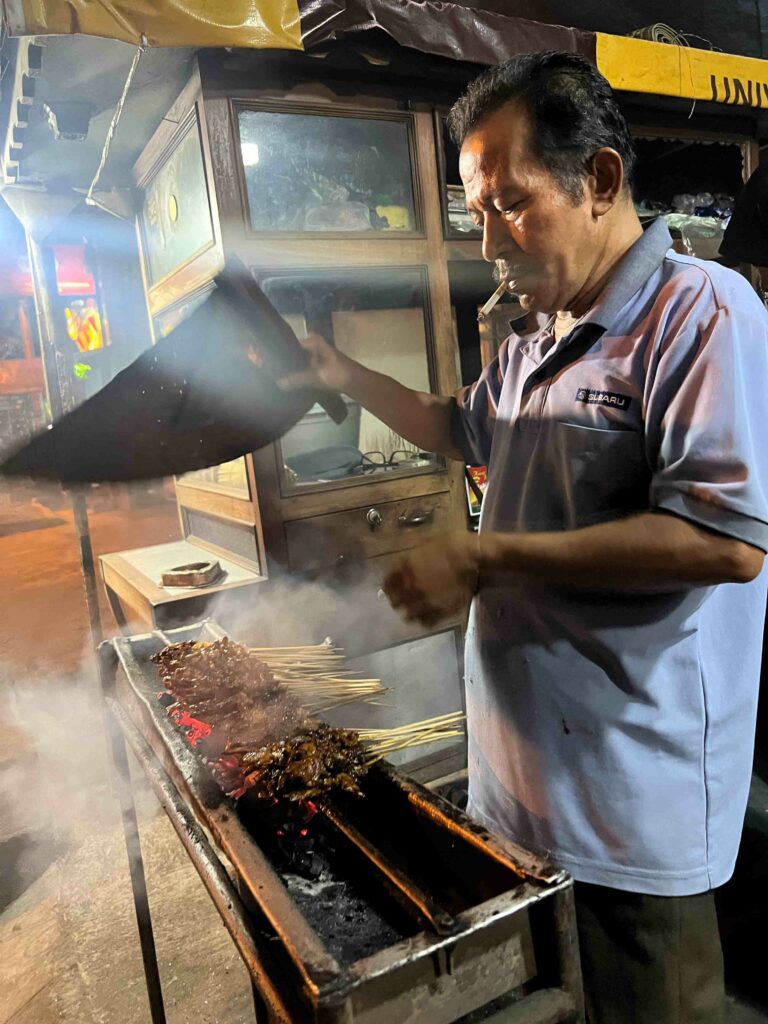
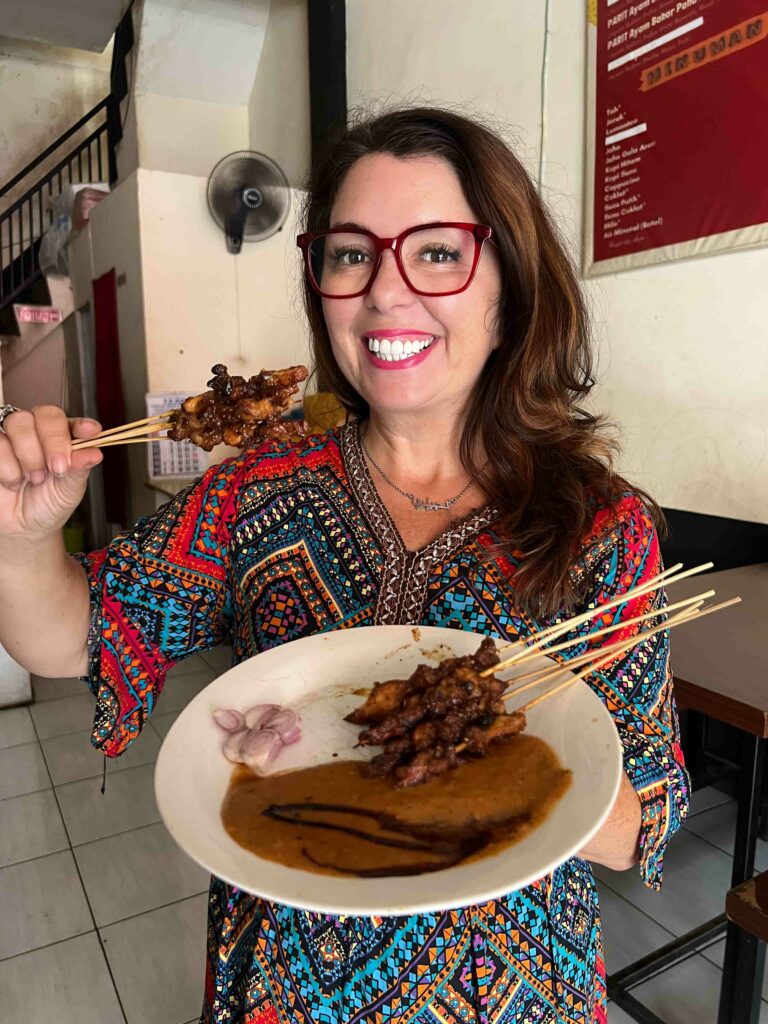
4. Sate / Satay
Sate, or satay might be the most common Indonesian national food. Who doesn’t love meat on a stick?
It is originally from Java and inspired by Indian kebabs.
There are so many variations. Meat is often marinated in a mixture of spices and then cooked over hot coals, which imparts a smoky flavor.
Sate has various regional twists, which were studied with an official announcement that there are 252 different varieties of sate.
Some of the most famous are sate lilit from Bali, made with minced meat of seafood.
Sate Padang from Sumatra features a yellow sauce, while Sate Madura is often served with a sweet soy glaze known as kecap manis in Javanese cuisine.
Although sate is most often chicken or beef, in Bali and some small areas of Jakarta there is pork or babi.
And in East Java it’s very common to have rabbit or goat, which reflects Middle Eastern influences in this region.
Surabaya Food
Personally my favourite is goat and a very common Malang food. Thankfully there are many East Javanese street food vendors who make this throughout Java.
This street food staple showcases Indonesia’s rich flavors and grilling traditions. Each skewer is a taste of Indonesia’s culinary diversity.
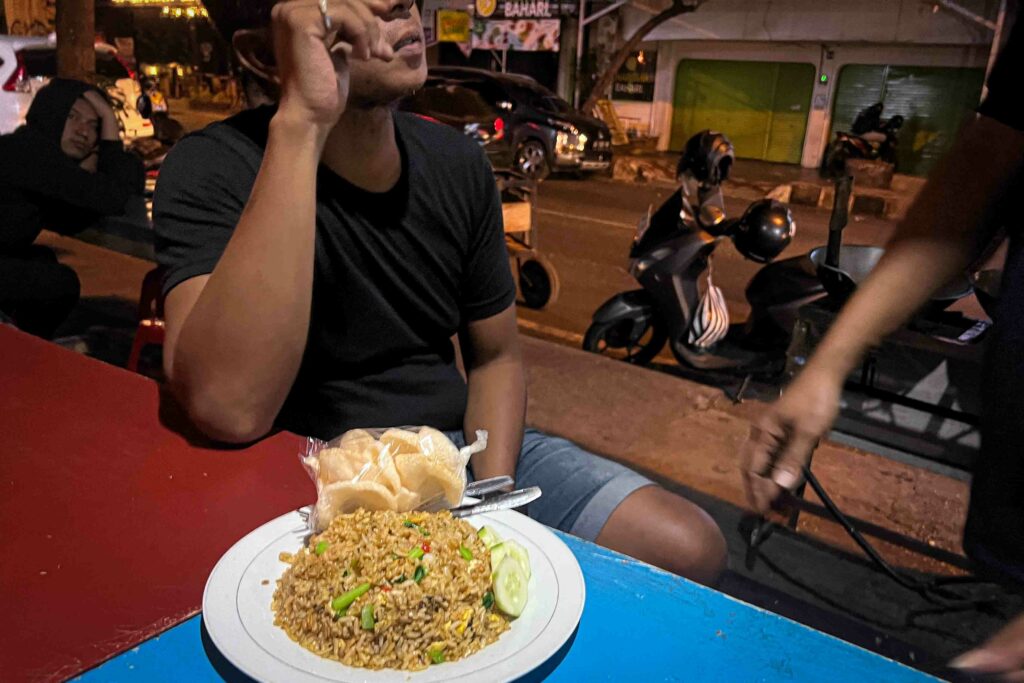
5. Nasi Goreng / Fried Rice
Nasi goreng, Indonesia’s twist on fried rice, is a national favorite known for its tantalizing flavors.
Believed to have originated from Chinese immigrants, it’s regionalized with local spices and ingredients.
In West Java it’s stir-fried rice mixed with kecap manis (sweet soy sauce), shallots, garlic, tamarind, and chili, often garnished with scrambled eggs, prawns, or chicken.
Across Indonesia you’ll find many variations, like nasi goreng kampung with a simpler, more aromatic touch or nasi goreng Jawa with a sweeter, richer taste. In East Java and Padang it’s much spicier.
This dish is a staple in Indonesian households and restaurants, offering a quick, satisfying meal. While you can find it in restaurants many Indonesians will tell you it’s better as a street food with a glass of teh telur.
No matter where you are in Indonesia it’s common to find nasi goreng street food vendors at night. Look for a busy food cart and you’re sure to find the best one.
